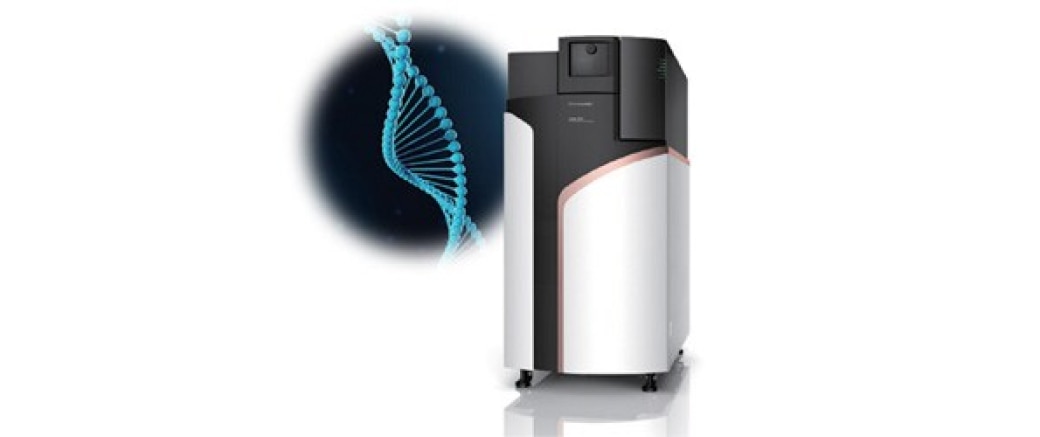Into The Future of Biopharma

Therapeutic oligonucleotides are gaining prominence in the field of biomedicines, offering diverse applications and advantages over traditional protein-based platforms. These synthetic molecules have a chemical backbone structure consisting of deoxyribonucleic acid (DNA) or ribonucleic acid (RNA) bases. Designed to target specific mRNAs, miRNAs, and disease-related proteins, therapeutic oligonucleotides have both the advantage of having targeted specificity of antibody therapeutics and the ability to be synthesized chemically like “low molecular weight” drugs, which makes it cost-effective.
Nucleic acid medicines have various functions, including small interfering RNA (siRNA) that controls protein synthesis by binding to mRNA, miRNA that enhances miRNA functions, aptamers that inhibit protein functions by binding to them, and ribozymes that directly cleave target RNA. These medicines are composed of chains of (deoxy)nucleotides, such as adenine, thymine, guanine, cytosine, and uracil, which are the building blocks of DNA and RNA.
While nucleic acid-based medicines can be chemically synthesized without the need for cell culture like antibody medicines, they still require careful monitoring due to their complex molecular properties. These molecules have a medium-sized molecular weight ranging from several thousands to tens of thousands. Ensuring the intended base sequence arrangement is crucial to ensure the effectiveness of these pharmaceuticals. To improve in vivo stability, target specificity, and overall potency, therapeutic oligonucleotides undergo modifications such as chemical modification, phosphorothioation (replacing an oxygen atom with a sulfur atom on the phosphate moiety), and even conjugation with N-acetylgalactosamine (GalNac).
Given the complexity of their chemical modifications and synthesis, a range of analytical techniques is employed to monitor the progress and final product. Shimadzu offers a wide array of analytical technologies and workflows to enable the scientists to meet their challenges.
Characteristic Analysis & Quality Control
Nucleic acid therapeutics can be produced by cost-effective chemical synthesis. The development and standardization of analytical methods for quality control are still in progress, with efforts being made in collaboration with industry and academia. In the development and evaluation of nucleic acid therapeutics, it is essential to understand their thermal stability, as this is a factor that controls their structure and functions. The confirmation whether or not synthesized nucleic acid therapeutics are arranged in the intended base sequence is also a critical quality characteristic to ensure the action of pharmaceuticals.
Generally, to ensure quality control of nucleic acid therapeutics, there are a few key evaluations:
- Separation of impurities
Oligonucleotide therapeutics are mainly manufactured by chemical synthesis. Separation and purification from impurities such as base defect and residual protecting group formed in the synthesis process are large problems.
Shimadzu’s Nexera XS inert offers the ideal solution for the separation of biomolecules by combining the elevated pressure tolerance of a UHPLC system with complete inertness of the sample flow path, ensured by the absence of wetted metal surfaces and offering ultra-high resistance to corrosion.
- Tm measurement and thermodynamic parameter analysis
The melting temperature (Tm) of an oligonucleotide is the temperature at which 50% of double-stranded DNA or RNA separates into single strands. The higher the Tm, the more stable the double-stranded DNA or RNA. It is one of the quality control test items.
Using UV-2600i+TMSPC-8, the Tm of oligonucleotide can be easily measured by heating and cooling. The rate of temperature increasing/decreasing can be selected from 12 levels of ± 0.1, 0.2, 0.5, 1, 2 and 5°C. There are 2 types of 8 micro-multi-cells with optical path length of 10 mm (minimum sample volume of 100 μL) and 1 mm (minimum sample volume of 10 μL), and these cells allow to measure 8 types of samples simultaneously in parallel.
- Sequence confirmation
The principle of quality control is "efficacy and safety," and the sequence of oligonucleotides is an important factor because it is involved in the recognition of target molecules.
- Confirmation of molecular weight, quantification, and concentration
Confirmation of synthesized oligonucleotide product identity and examination of impurities by LC-MS precision mass spectrometry are important quality control tests.
LabSolutions InsightTM Biologics, A Dedicated Workspace For Oligonucleotide Characterization

LabSolutions Insight Biologics is a dedicated software platform for oligonucleotide characterization using the LCMS-9030 or LCMS-9050 quadrupole time-of-flight type (Q-TOF) mass spectrometer. Main product and impurity identification includes several core editors for sequence, nucleotides, linkers, ribose and base modifications. Together with processing and integration for target modifications, Insight Biologics is a comprehensive workspace for data review, processing, and reporting.
Insight Biologics provides an easy method to input sequence information, configure target modifications, and set data analysis parameters. Using sequence information, Biologics comprehensively identifies chain length differences, nucleotide gaps, modifications, conversions, adducts, and other impurities. Q-TOF Data Dependent Acquisition (DDA) records MS and MS/MS spectra. MS spectra are used to identify the molecular weights of impurities, and corresponding MS/MS fragment spectra are used to confirm sequences. Visual displays of sequence coverage enhance the confidence of identifications. Seamless processing and reporting with audit trail support make Insight Biologics a comprehensive solution for oligonucleotide characterization.
Learn more about LabSolutions Insight Biologics
Discover Shimadzu’s LC Columns For Better Bioseparations
There are several challenges that biopharma industries face. To overcome them and seize the opportunities, industries must tap on various technologies to meet the biopharmaceuticals production and quality control standards, and also to accelerate their drug discovery, development, and compliance processes. Advanced analytical techniques such as chromatography, spectroscopy and mass spectrometry are commonly used by biopharma industries for this purpose.
Liquid chromatography (LC) has been the technique of choice due to its relevance, wide applicability, and efficiency. With advancements in LC columns and instruments, LC analytical methods are shorter in analysis time, better in separation, and higher in signal intensity and sensitivity. In this brochure, you will learn more about the new Shimadzu LC columns and how they are applied in various biopharma workflows. Explore our eBook to understand how these LC columns, with Shimadzu LC and mass spectrometry (MS) work together to achieve fast, robust, and reliable separation and measurement.
Application Spotlight: An Oligonucleotide Impurity Analysis Workflow Using LabSolutions InsightTM Biologics Software
Oligonucleotide therapeutics have undergone rapid development in recent years and are attracting interest as a new modality in drug discovery. Such development has created a demand for the comprehensive detection and identification of impurities in oligonucleotide therapeutics to ensure their safety and efficacy. This edition of application news describes an impurity analysis workflow for oligonucleotides based on the LCMS-9050 quadrupole time-of-flight mass spectrometer system and LabSolutions Insight Biologics software.
Digital Classrooms: Towards the Future of Biopharma: Insights into Oligonucleotide Therapeutics
In this session, gain insights into the state-of-the-art solutions that support the entire workflow employed by Contract Drug Manufacturing Organizations (CDMOs), from R&D to validation and manufacturing. Learn more from our experts on the biopharmaceutical drug development and delve into the capabilities of our solutions, including our Nexera XS inert system, LCMS-9050 QTOF, and the latest LabSolutions Insight Biologics software.
Register now for on-demand access to new perspectives into oligonucleotide therapeutics!
Thank you for reading! If you are interested in our updates, stay connected with us via our Newsletters, Digital Classrooms, LinkedIn, Facebook, or Youtube.


